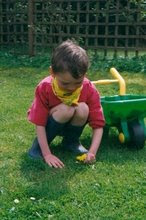One of our pupils from the Conductive Education Support
Centre in Brockenhurst, Hampshire UK, graduated from University today!!♥ You can see Sam when he was a
little boy on the second photo on the right, helping another little boy. What
an outstanding achievement is his graduation for him and his proud family. ♥ Sam is also a talented
singer. What a wonderful day.
Monday, 18 November 2013
Saturday, 2 March 2013
Challenge Me!™ Speech and Communication Cards
by Amanda Elliott, one of the first graduates of the
National Institute of Conductive Education UK.
Parent review on Amazon and now translated to
German too.
"fantastic and easy to use"
"I bought these cards for my 6 year old son. He has
mild Asperger’s syndrome and speech difficulties (stammer and delayed).
He has been having speech therapy since he was four but we
find that he has a 6 week set then there is a huge gap in between ( normally 6
months). We started using these cards whilst waiting for his next round of
speech therapy and he absolutely loves them. I have four boys and they all
wanted to have a go which is good and doesn't make him feel like he is doing
any work. They are really easy to follow, I let him shuffle them and pick a few
selected ones out. One thing that would be good though is an explanation of
what the exercise is for on the back of the card as well as the booklet.
Highly recommended and fun. "
Speech and language skills are a vital part of being able to
communicate with others and express one's own needs.
Challenge Me!™ Speech and Communication Cards feature fun
and dynamic challenges for children aged 3-12 with any form of speech
difficulty, whether this is a severe problem which is related to a motor
disability or a general delay in speech.
An ideal tool for parents and professionals working to
improve a child's speaking skills, the cards provide a variety of fun
activities designed to improve breathing techniques and use of speech apparatus
such as the mouth, tongue and nose; control extra salivation; moderate volume,
tempo, rhythm and intonation of speech; and improve sound production and
clarity of words and sentences. The enclosed booklet provides instructions and
advice for using the cards effectively.
These user-friendly activities will make speech training
enjoyable for both children and their facilitators and are great for use in the
classroom, at home, on a one-to-one basis or with a group of children.
References:
Saturday, 16 February 2013
Subscribe to:
Comments (Atom)
















